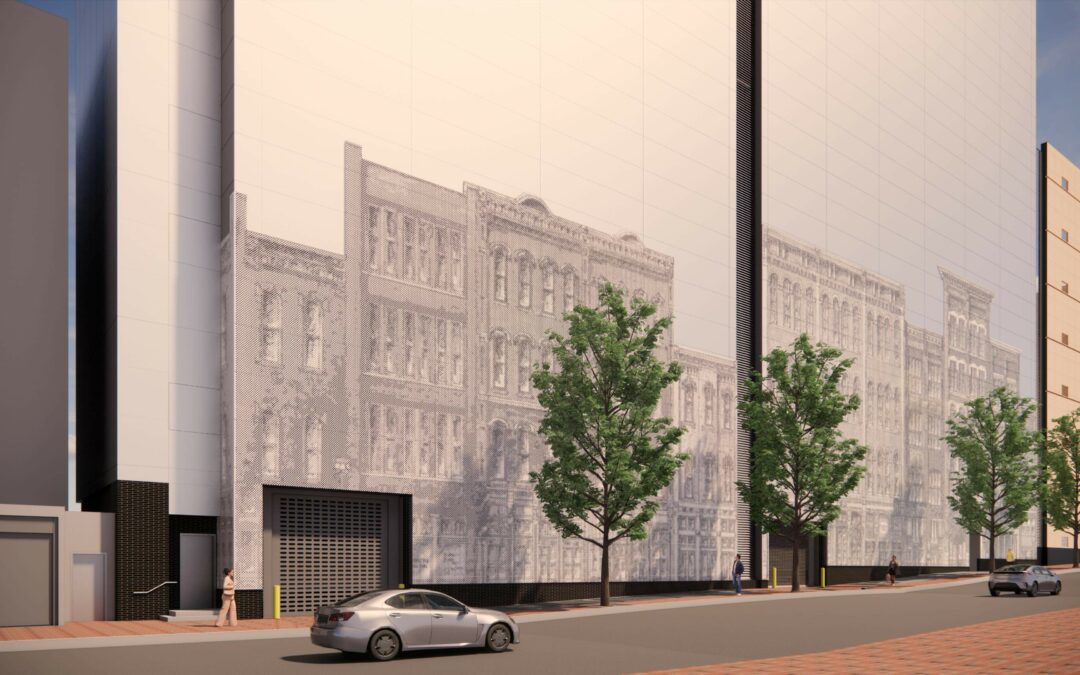At 6:31 a.m. on December 25th, 2020, a lone bomber in an RV loaded with explosives blew himself up in front of the AT&T building on 2nd Avenue. Sherry and I were in bed at our home in Hillsboro Village and heard a muted boom, which woke us both up. It was not until later that we learned of the horrible and despicable news, which seems to have put an exclamation point on the intense year that our city had endured.
The Christmas morning bombing devastated one of America’s most well-preserved business districts and was a tragedy for Nashville’s historic Second Avenue, destroying businesses and displacing residents. According to the Office of Emergency Management, the blast affected 400 residents, 1,200 employees, 45-plus businesses, and 46 parcels, at a time when businesses were already struggling with the impacts of the pandemic. Metro Nashville Codes Department deemed that several buildings to be unsafe and would have to be flattened.
A deranged man had rigged his RV with bombs and had parked next to the AT&T building to enact his plan. He was apparently concerned about alien invasions, and somehow tied this to AT&T, as he sought to take out that infrastructure. He was also intent to take as few lives as possible, and played music over speakers, interjecting every 10-15 minutes with a warning and a countdown the explosion, which ultimately only took one life, the bomber’s.
The community is so thankful for the incredible police response during this unfortunate event. It is even more notable that my friend, and fellow Leadership Nashville 2018 alum, Nashville Police Chief John Drake’s, was on one of his first days on the job. His leadership proved remarkable, and likely saved many lives. Chief Drake’s team, though likely uncertain what was really going to happen, went door to door to all of the condos in the area, warning residents to get out, or to get away from windows, which proved to be good advice.
The buildings lining the east side of Second Avenue are long and narrow, a characteristic of their past as river warehouses, stretch between Second and First Avenue, and date back to the late 1800s. The ups and downs of the city’s history are etched in their walls. Back then, Second Avenue was known as Market Street and First Avenue was Front Street. The neighborhood was bustling with steam traffic on the Cumberland River transporting people and freight. Steamboats — some owned by Capt. Tom Ryman for whom the Ryman Auditorium is named — docked at riverfront, supplies were unloaded and moved a few yards into the warehouse entrances on Front Street and the goods were sold from storefronts on Market Street.
A century later, Front Street was better known as First Avenue and lined by back doors rarely opened and guarded by trash dumpsters. We had turned our back on the river.
The Matthew’s family invested heavily in the block in the 1970s and 1980s when it was depressed. “Downtowns across America were in decline and many of those buildings were barely utilized” said Bert Matthews. In the 1980s, occasional barge launches on the East Bank and programmed activity at Riverfront Park helped draw people to the river and inject some energy into the district. Those were the days when the city had 84 vacant and semi-vacant old buildings and downtown was an empty shell. Though as one of the most historic sections of town, Second Avenue had some life even then. Market Street Emporium, Windows on the Cumberland, Laurel’s Oyster Bar and a handful of small businesses and law offices dotted the street before other businesses moved into the neighborhood.
In the early 2000s, the area started to really take off. The Nashville Downtown Partnership was created. The Nashville Civic Design Center created the Plan of Nashville. Our CityLiving Group started home tours to show off the potential of living downtown. Core Development developed several properties including Church Street and Exchange Lofts, both damaged peripherally by the bomb. We also opened a downtown CityLiving Group sales office on Church Street near Third Avenue, which remained open before the Great Recession required consolidation. Second Avenue began to thrive. Steve Turner revitalized a five-story building on Second Avenue and named it Butler’s Run. The Wildhorse Saloon opened. Residents were attracted to the street by the renovated lofts and conversion to condos of apartments like District Lofts, marketed and sold by CityLiving Group.
After the bombing, there was a good chance that much of the historic district would be lost. But what happened in the aftermath is remarkable. Our city leaders rallied, and the Mayor’s Office partnered with the Nashville Chapter of the Urban Land Institute, which pulled together a TAP, or Technical Advisory Panel, which was comprised of local leaders and advisors, myself included, and a group of five experts recruited from ULI national. For several days, the panel of experts interviewed key stakeholders, and then, at the end, presented its recommendations.
Key recommendations were:
- Create a Market Street District; go back to original names, Front Street for 1st Ave, and Market Street for 2nd
- Use this as an opportunity to revitalize our relationship with the river by creating more walkable connections between Front St. and Market St. of the long, narrow buildings are available for commerce.
- Given this connectivity, fund the Riverfront Park.
- Bring more arts, culture, and outdoor dining to the area.
- Connect the area to its surroundings, which would entail improving sidewalks and adding water transportation to the East Bank.
- Focus overall on equitable development to ensure that economic growth benefits everyone.
View 2nd Ave. recovery project renderings here.
Some of this work is now being done, and connectivity to the river now seems certain. I’m now encouraging our local chapter of ULI to reconvene to get an update and presentation, and to continue to use this opportunity to turn the Christmas 2020 catastrophe into continued opportunity! More to come in 2023.

